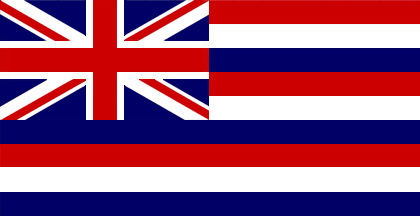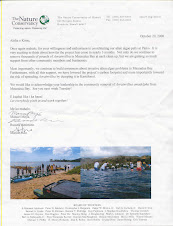Sunday, November 30, 2008
Lā Kūʻokoʻa
Saturday, November 29, 2008
Limu Huki for Pōʻaono Nowemapa 29, 2008


Approx. 4500 lbs of invasive algae were pulled today from the reef flats at Paiko Beach. Mahalo nui to the 20 something volunteers who came out to lend their kōkua. Also, nui nui mahalo to all who contributed food & drinks, supplies, equipment & algae disposal means to make this another successful pull.
Thursday, November 27, 2008
Hauʻoli Lā Hoʻomaikaʻi
Saturday, November 22, 2008
State Observes First Makahiki Commemoration Day
Day focuses on peace, abundance, unity and conservation.
Today (Thursday, November 20th) marks the first official State observance of Makahiki Commemoration Day, which was designated for recognition by the 2008 Hawai‘i State Legislature. It is not a state holiday.
“Makahiki was a significant time throughout Polynesia,” said Senator J. Kalani English, the principal introducer of the bill that established Makahiki Commemoration Day. “Conflict and war were set aside for the four-month Makahiki season, and unity and peace prevailed. They also let the land lay fallow as they celebrated the harvest.”
To perpetuate the ancient wisdom of land conservation, abundance, unity and peace during the four months of Makahiki, Polynesian regional governments celebrate the Makahiki season and have designated November 20th as the start of the Makahiki observance. With today’s fist official observance of Makahiki Commemoration Day, Hawai‘i joins that group.
“This brings us closer to our land, our culture, and our brothers and sisters across Polynesia,” said English. “I hope everyone will take a moment today and reflect on all of our interconnections.”
Click on link below:http://www.hawaiisenatemajority.com/2008/11/20/state-observes-first-makahiki-commemoration-day/
Monday, November 17, 2008
Just a Thought about Agriculture in Maunalua - ʻUala


There was much more sweet potato (ʻuala) farming in the ahupua'a of Maunalua in ancient Hawai'i, and little or no kalo production due to the dryer environment of Maunalua. If an inland or ma uka type Hawaiian cultural & agricultural learning center were to be located somewhere in Maunalua in the future for the education of our keiki, community members and others, wouldn't it be befitting to have a focus or concentration on a crop that has much historical significance to this area such as ʻuala (see keiki ʻuala piko vines in pictures above).
Other wetter type ahupua'a in the islands revolve there activities & learning around kalo rightly so if that was a known location for kalo in the past and the environment is suitable for kalo growing. Maunalua could be a very unique and different learning place with the emphasis on ʻuala cultivation in which the valleys of Maunalua were once known for.
ʻUala was the second most abundant starch in the diet of the people of Hawai'i after kalo. There is rightly so, much emphasis on kalo today for many reasons including the religious & spiritual reasons which I will not go into in this post. The point being made here is that a place to learn about ʻuala cultivation and it's importance in old Hawai'i as an emphasis and in addition to other Hawaiian cultural and agricultural topics would be ideal in Maunalua. ʻUala cultivation is much less common to see and hear about as compared to kalo throughout the islands. Maunalua could play an important part in making ʻuala visible again in front of the community and in also developing a greater appreciation among many more of us for this important & culturally significant food item of old.
Although, Maunalua has been exposed to over-development of housing in recent years, there are still lands available where a learning center & possible community kitchen could be located that could allow for teaching of Hawaiian culture, cultivation & agricultural methods, proper ahupua'a based land usage & management, community gatherings and farmers open markets for the existing farmers and agricultural businesses in our community.
Maybe this is just the concept that will assist in keeping agriculture in our community for the long haul, bring the community closer together and help keep our last remaining pockets of rural Hawai'i alive and well in Maunalua.
Click here to learn more.
Tuesday, November 11, 2008
Read This!
Travels of the ʻAmaʻama & Awa
Kuapā fish pond was said to be connected to Kaʻelepulu fish pond in Kailua on the Koʻolau side of Oʻahu. ʻAmaʻama and awa were known to travel between these two ponds on the opposite sides of the Koʻolau mountain range via an underground tunnel.
When the ʻamaʻama fish disappeared from Kuapā pond they appeared in Kaʻelepulu pond. At the same time, the awa fish disappeared from Kaʻelepule and appeared in Kuapā. When the ʻamaʻama reappeared in Kuapā, the awa would disappear.
This same observation was made in more recent years by some of the Japanese fisherman who leased Kuapā pond. McAllister, Archeology of Oʻahu













